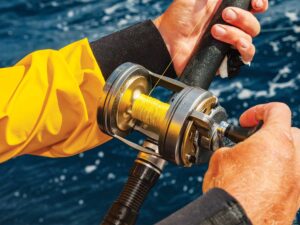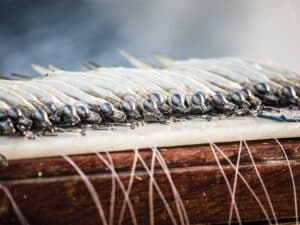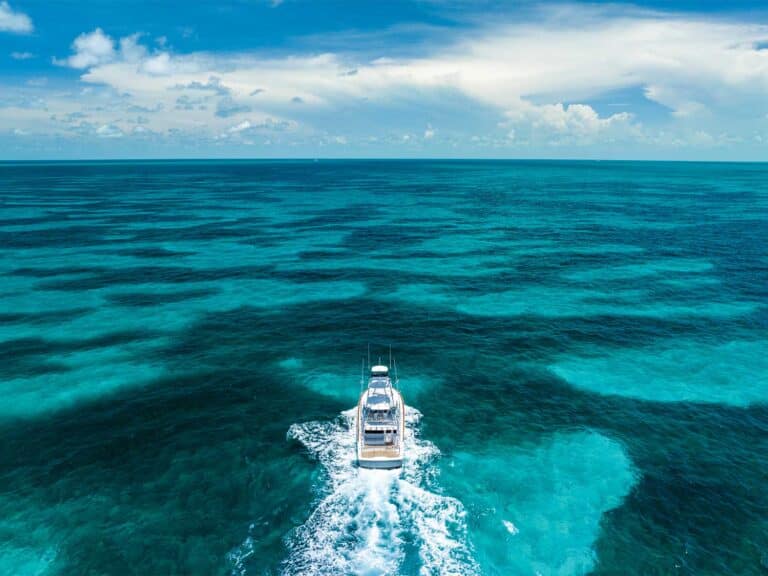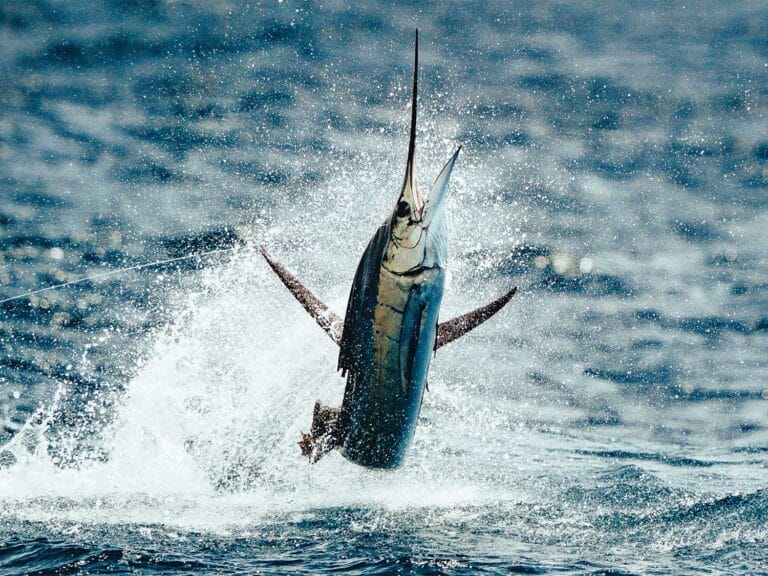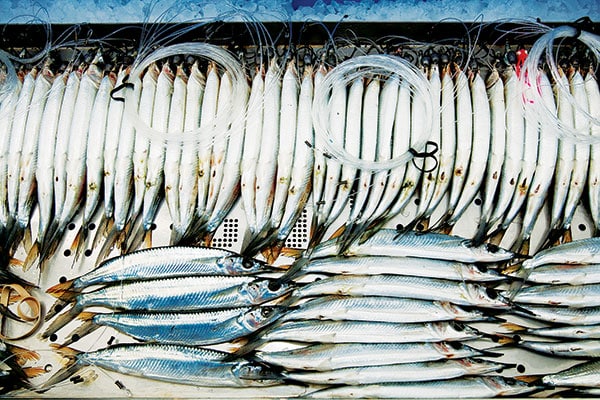
Trolling a spread of circle-hooked ballyhoo ranks as one of the most popular methods for chasing billfish all over the world, and while most of the techniques originated in the sailfish-rich waters of Costa Rica and Guatemala, this style of fishing has spread to Mexico, the East Coast of the United States, and well into the far corners of the sport-fishing community. This highly effective tactic works for a wide variety of species, and it’s also a lot of fun for the angler, who takes an active, hands-on role in the hookup process. The captains consulted for this feature have more than 30,000 combined lifetime billfish releases and are acknowledged pros on some of the more-advanced dead-bait techniques that will help you fly a few more flags at the end of the day.
The Basics
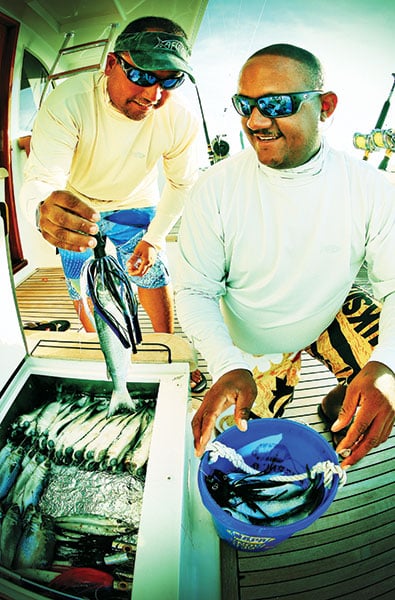
The Basics
First, you should have a good foundation. For the most part, we’ll target sailfish using 20- and 30-pound-class tackle and ballyhoo rigged with circle hooks, but these same angling principles also apply to a wide variety of other species, including any species of small marlin, tuna, mahi and others. When you have a bite, or a fish is approaching a bait in the spread, you should be able to grab the correct rod, go into free-spool, and execute a good drop-back. Watch the line: If it leaves the rod tip in loose waves, you’re fine, but if it comes off the tip in a straight line to the bait, apply less pressure to the line. Start with a four- or five-count drop-back, but pay attention, and soon you’ll know when to lock up a little sooner on an aggressive fish or a little later with a lazy bite. Then slide the drag lever up smoothly rather than slamming it forward, as this will help the circle hook settle in the corner of the fish’s mouth as it swims away.
Swing and a Miss
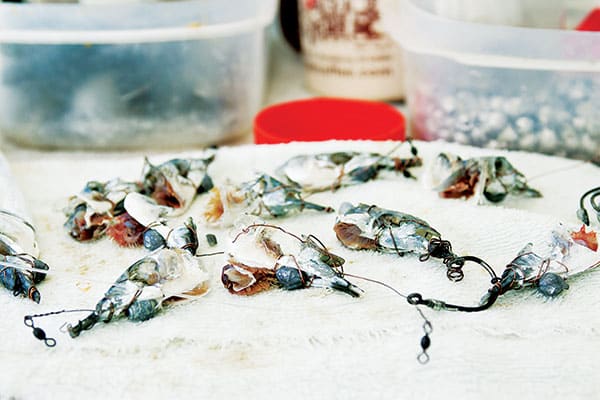
So what happens when you execute a good drop-back, push up the drag, and nobody’s home? There are two possibilities. First, the fish either missed the bait or it popped out of its mouth. Second, the fish stripped you clean, leaving just a head bridled to the hook, the dreaded “sancocho” — don’t worry, this happens to even the best anglers in the world, just not as often as to the rest of us. If you don’t come tight when you slide the drag up, you should see if you still have a bait, and get ready for a follow-up bite.
Capt. Bubba Carter has played the dead-bait game all over the world for the past four decades at the helm of famed charter boat Tijereta and teaches the sport as well as anyone. “If you don’t hook up, then I need to see if you still have a bait left,” he says. “Hold the rod tip high so the bait comes back to the surface and skips a little. At the same time, you should go back to free-spool with your thumb on the spool so you’re ready for a second shot. If you have a bait, I’ll tell you to hold it right there or maybe wind it up a little. If not, I’ll have a mate put another bait in the water for you right away.”
Turning Singles into Doubles, Triples and Quads
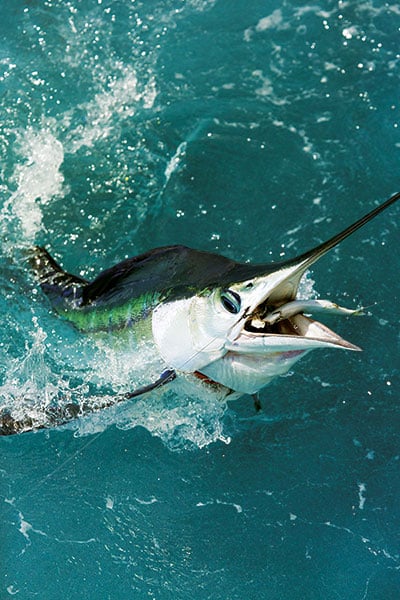
More times than not, though, you’ll have a second or third shot at the fish, so stay with it and don’t give up. Even when clearing the bait back to the boat, you should swim it back through the spread and be ready for a surprise bite from an unseen fish.
Backlash!
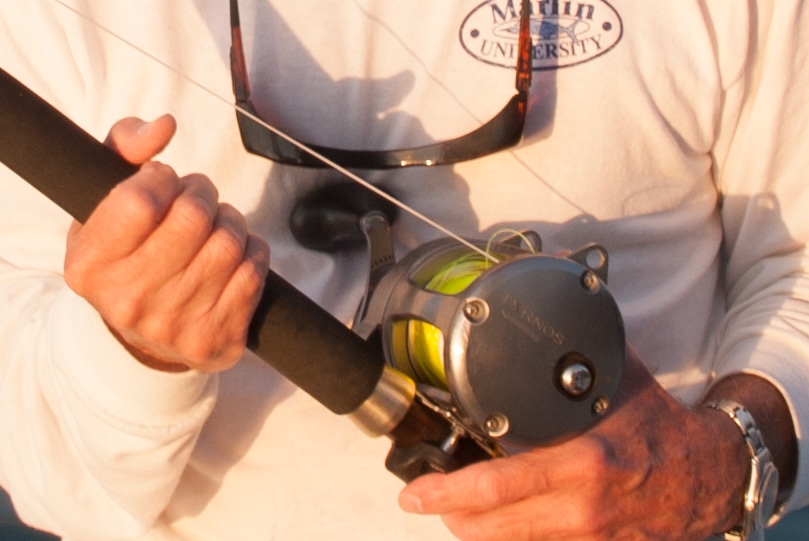
As an angler, a backlash means disaster: You’re in free-spool when things go sideways and a bird’s nest appears in the reel. But all is not lost just yet. The unlucky angler should immediately say, “Backlash!” keeping in mind that you might have to turn your head toward the bridge and speak up a bit so the captain hears you. If the spread lies directly behind the boat, the skipper can then go right into reverse to help the angler gain a little line — just wind like crazy right over those loose loops and hope for the best. Sometimes, you can save a fish that normally would be nothing more than a broken line and a bad memory.
Capt. John LaGrone’s professional career spans more than 20 years, a majority of which has been spent in Central America — first at the helm of Magic in Guatemala and more recently on Pelese out of Los Suenos, Costa Rica. “If you start to backlash with just a few loose loops, start applying drag pressure right away rather than continuing in free-spool,” he says. “You’ve hooked the fish at this point, so use a little drag pressure, and those loops will tighten right up as the line’s pulled off the reel.” Don’t go to full strike though; just a few pounds of drag might clear it. Keep your fingers clear of the loops too.
Thumb Off

Keep backlashes to a minimum. As Capt. Rob Moore of Fa-La-Me once said, a backlash usually happens when you’re playing tug of war with a fish on the other end and you finally decide to let him have it. Practice a good drop-back, and don’t ever try to clamp down with your thumb — that’s what the drag lever’s for.
Be Ready for the Next Shot
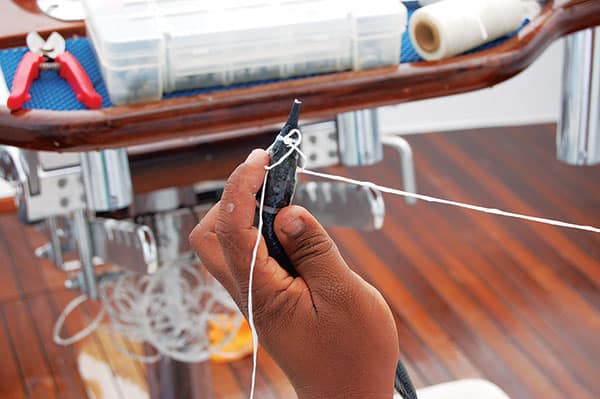
Ever wonder how those tournament boats pile up an incredible number of sailfish? They always fish for multiple bites. By turning in the direction of a hooked fish and clearing the lines and teasers on only that side, they’ve still got half (or more) of the spread in the water, plus they’re helping the angler regain line by swinging around on the fish. As an angler, stay in the game. Resist the urge to reach for your camera or gawk at a greyhounding sailfish on the other side of the boat — be ready for a second, third or fourth bite. Many captains prefer to have anglers assigned to specific positions: When one has a bite, the others remain locked on the remaining baits and teasers, ready to take advantage of multiple shots. The best time to fish is when you already have one on, so don’t wind your bait in until necessary.
Mobility is Key
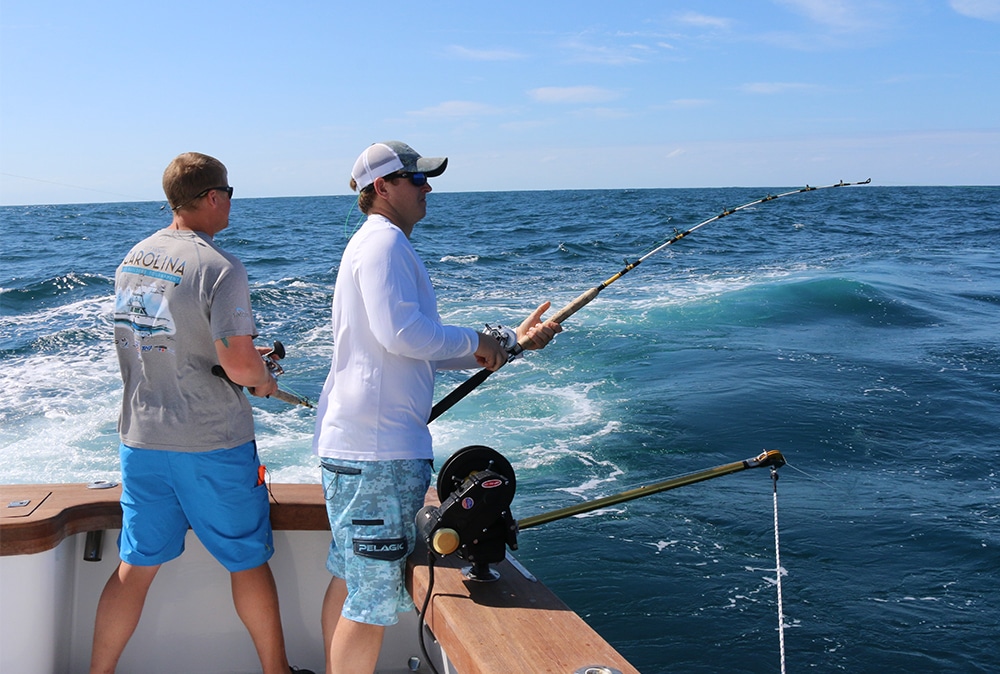
Once you do have those additional fish hooked, then it’s a matter of moving efficiently in the cockpit. Don’t just camp out in a corner; be mobile and ready to go behind or in front of another angler. Sometimes, you might need to dip the rod under an outrigger or maneuver around others in the pit, but remain calm and listen for directions from the captain, who can see the big picture and direct you accordingly.
Turning a Stubborn Fish
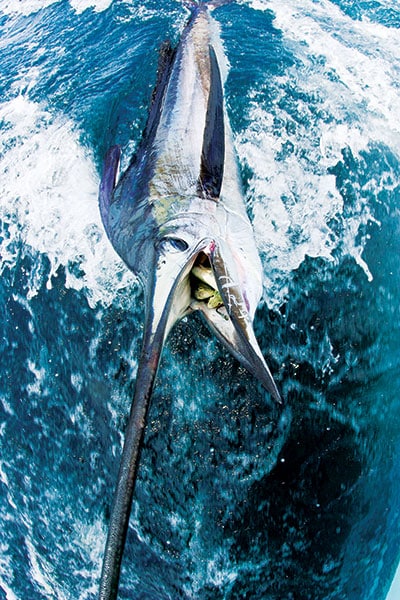
Whether it’s a nice blue marlin or a slab-sided mahi, eventually you’ll find yourself tied into a fish that just doesn’t want to move. They’ll swim along straight down beneath the boat, not taking much line, but not allowing you to gain line either. It’s a critical stage of the fight: The fish rests in a prolonged fight to the point where frayed leaders and pulled hooks start to become a real possibility. To encourage that stubborn rascal to come up, add a little more pressure by gently pinching the line between the index finger and thumb of your leading hand as you lift the rod, then crank the reel on the downstroke. Carter recommends this method rather than thumbing the line down against the foregrip. “You don’t have to gain much line,” he says. “Just a full turn of the reel handle on each stroke is plenty. Even a half-turn works; just take whatever the fish will give you, and eventually, you’ll get its head pointed up.” Another option includes lightening up on the pressure. By backing off almost to free-spool, especially when fighting a marlin, the fish will usually respond by coming to the surface on its own. It’s an expert move and should be coordinated with the captain, but it’s a highly effective strategy when both the captain and angler work in unison.
Fish Where They Live
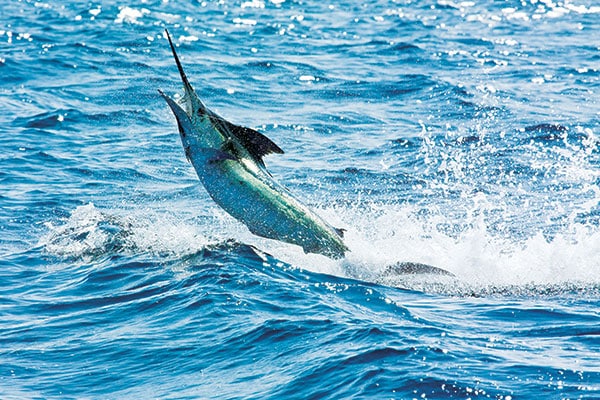
The final and most important part of becoming a better angler involves practice, and this means going where the fish live. One captain used a golf analogy: Imagine hitting just five golf balls each year. You managed to hit that last one perfectly this season, but it’s going to be another year before you have the chance to hit five more. You’re not going to be very good any time soon. But go to the driving range and hit 500 golf balls under the watchful eye of a club pro, and your skills will improve rapidly and dramatically. The billfish hot spots of the world — places like Costa Rica; Guatemala; Isla Mujeres, Mexico; and elsewhere — are the driving ranges of the fishing world. Put in the time and effort, and you’ll be well on your way to earning an advanced degree in billfishing.
